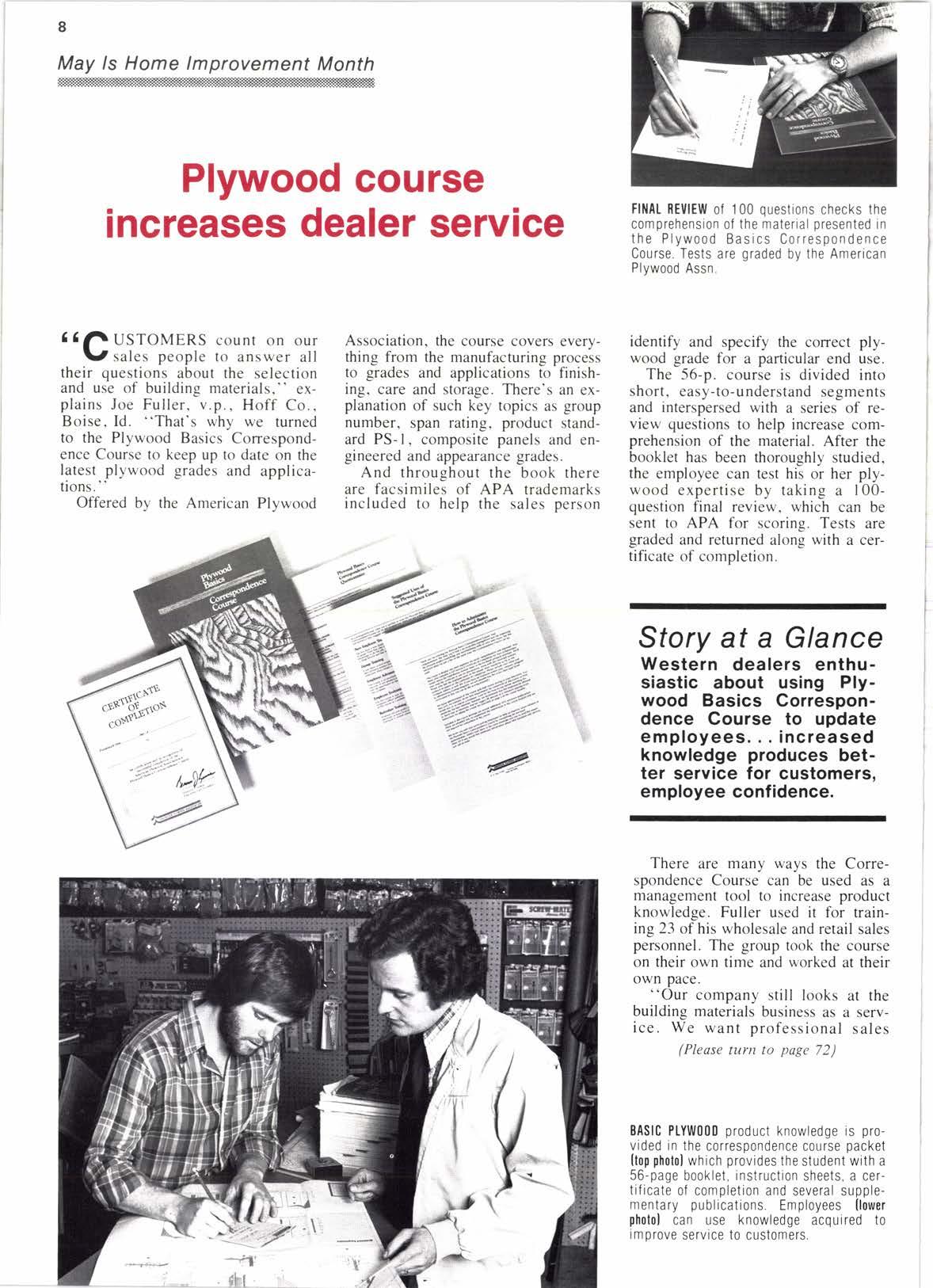
1 minute read
Plywood course increases dealer service
3(l^ USToMERS count on our V sales people to answer all their questions about the selection and us'e of building materials," explains Joe Fuller, v.p., Hoff Co., Boise, Id. "That's why we turned to the Plywood Basics Correspondence Course to keep up to date on the latest plywood grades and applications. "
Offered by the American Plywood
Association, the course covers everything from the manufacturing process to grades and applications to finishing, care and storage. There's an explanation of such key topics as group number, span rating, product standard PS- I , composite panels and engineered and appearance grades.
And throughout the book there are facsimiles of APA trademarks included to help the sales person identify and specify the correct plywood grade for a particular end use.
FltlAL REI|IEW of 100 ouestions checks the comprehension of the material presented in the Plywood Basics Correspondence Course. Tests are graded by the American Plvwood Assn.
The 56-p. course is divided into short, easy-to-understand segments and interspersed with a series of review questions to help increase comprehension of the material. After the booklet has been thoroughly studied, the employee can test his or her plywood expertise by taking a 100question final review, which can be sent to APA for scorins. Tests are graded and returned alon! with a certificate of completion.
Story at a Glance
There are many ways the Correspondence Course can be used as a management tool to increase product knowledge. Fuller used it for training 23 of his wholesale and retail sales personnel. The group took the course on their own time and worked at their own pace.
"Our company still looks at the building materials business as a service. We want professional sales (Please turn to page 72)
BASIC PIYW00ll product knowledge is provided in the correspondence course packet llop pholol which provides the student with a 56-page booklet, instruction sheets, a certificate of completion and several supplementary publications. Employees (lower photol can use knowledge acquired to improve service to customers.

